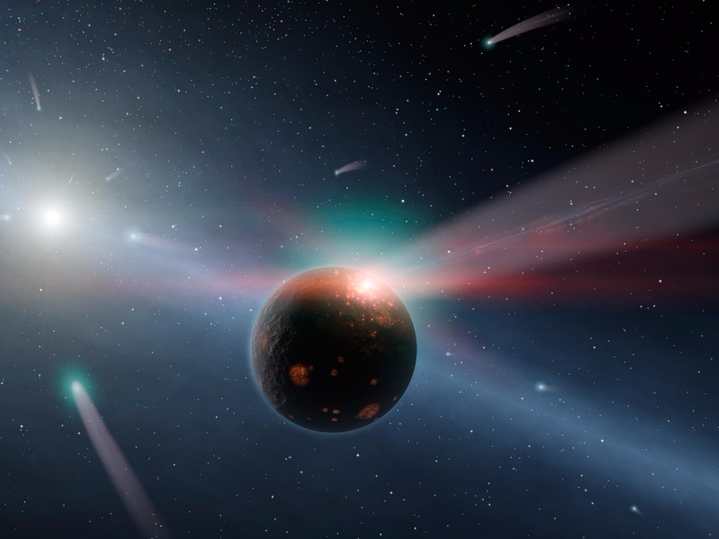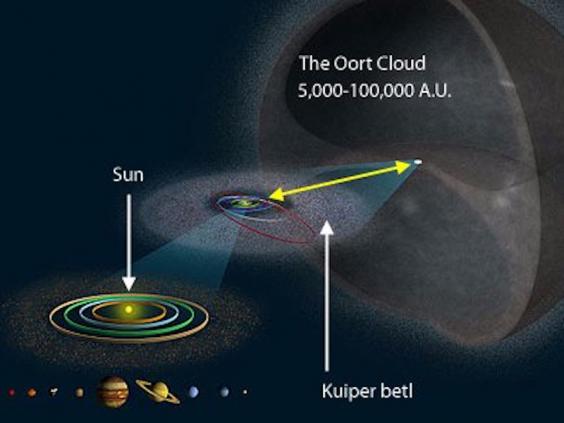Researchers have known for a
while that a star called Gliese 710 is headed straight for our solar system,
but they've now worked out precisely when it should arrive. The star is
currently hurtling through space at about 32,000 mph, and is around 64
light years away. (One lightyear is around 5,878,000,000,000 miles.)

Gliese 710 is about half the
size of our sun, and it is set to reach Earth in 1.35 million years, according
to a paper published in the
journal Astronomy & Astrophysics and when it arrives, the star
could end up a mere 77 light-days away from Earth — one light-day being the
equivalent of how far light travels in one day, which is about 26 billion
kilometers, the researchers worked out.
As far as we know, Gliese
710 isn't set to collide directly with Earth, but it wil be passing through the
Oort Cloud, a shell of trillions of icy objects at the furthest reaches of our
solar system. So although 77 light-days sounds like a relatively safe distance,
the speeding star could burst through the cloud and shoot these icy objects and
comets all around our solar system.

"Gliese 710 will trigger an observable cometary shower with a mean density of approximately ten comets per year, lasting for three to 4 million years," wrote the authors.
The team, who hails from
Adam Mickiewicz University in Poland, used measurements from the European Space
Agency's Gaia space observatory. This new observatory is constructing the
largest and most precise 3D space catalog ever made, totalling approximately 1
billion astronomical objects, which means the data are ten times more accurate
than previous predictions.
There's still an error rate
of around 50% though, which means Gliese 710 could actually scrape past at a
mere 40 light-days away. Some scientists speculate that a similar event
of a star passing through the Oort cloud triggered the asteroid that wiped out
the dinosaurs around 65 million years ago.
However, the Gliese 710
event could make the dinosaur extinction look relatively minor. At its closest
distance, it will be the brightest and fastest observable object in the sky,
and as the authors say in the paper, it will be the "strongest disrupting
encounter in the future and history of the solar system."
But it's also not the only
galactic body to worry about. There are as many as 14 other stars that could
come within a 3 light-year distance to us any time over the next few million
years.
Comments
Post a Comment